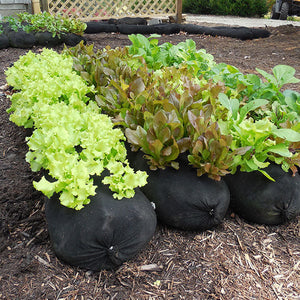This hardy, easy-to-grow crop is a kitchen staple all across the world. Onions are actually one of the earliest cultivated crops, as they grow well across varying climates and in different grades of soil. Today, onions are present as the base of most recipes across a wide range of cuisines.
Onions are also known to have medicinal properties, often used to help soothe sore throats and sinus ailments or even to reduce inflammation. Other uses for onions include repelling mosquitos, cleaning your BBQ grill, and absorbing offensive household odors.

Growing onions in GardenSoxx® | Plant Family: Amaryllidaceae
Nutritional Information For Onions
Nutritional Facts - per 100/g
| Nutrient | Amount | % Daily Value |
|---|---|---|
| Calories | 40 | - |
| Total Fat | 0.1 g | - |
| Sodium | 4 mg | - |
| Potassium | 146 mg | - |
| Dietary Fiber | 1.7 g | - |
| Sugar | 4.2 g | - |
| Protein | 1.1 g | - |
| Vitamin C | - | 12% |
| Iron | - | 1% |
| Vitamin B6 | - | 5% |
| Magnesium | - | 2% |
| Calcium | - | 2% |
How to Grow Onions in Your GardenSoxx®
While you can start onions from seed, we recommend using sets instead, as they will establish more quickly. Onion sets look like tiny onions and will grow to full size in about 14 weeks. You can plant onions while the weather is still a bit cool, as long as the soil is workable and temperatures are likely to stay just above freezing. They can also be planted in the fall and will emerge in the spring as the ground thaws.
Onions Seed to Harvest Time: 90 days (80 days for sets)

How to Harvest Onions
Once the necks of the onions have gone soft and bent over, the onions are ready to pick. Pull them up out of the ground, being careful to keep the stem intact (loosen the soil slightly if needed). Cure onions by laying them out in a well-ventilated, dry spot (a covered porch is a great option) and wait for the outer leaves and necks to dry before storing them in a cool, dark space.























































